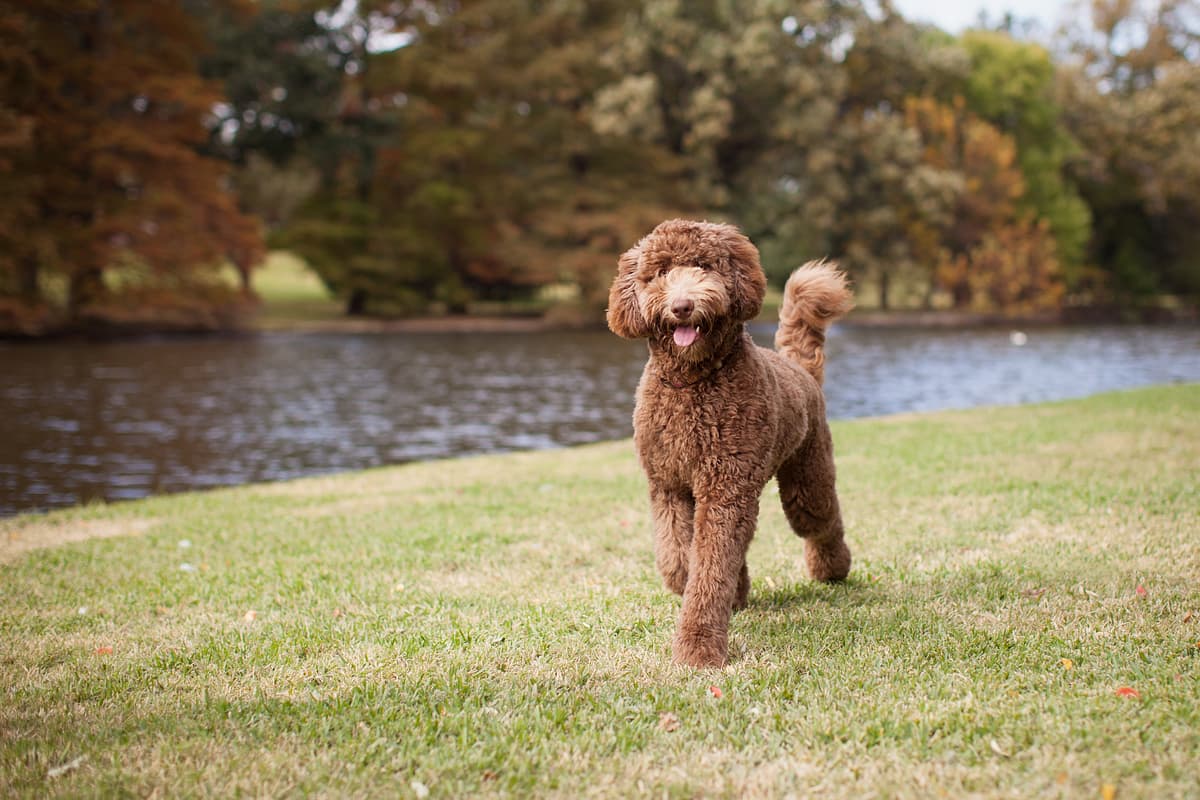Labradoodle vs Labrador Retriever
Discover the differences between Labradoodle and Labrador Retriever to make the best choice for your situation.
Try different breeds

Labradoodle
Friendly, intelligent, and playful, this breed thrives as a loving family companion. Their low-shedding coat and affectionate nature make them popular with children and allergy sufferers.

Labrador Retriever
Eager, friendly, and intelligent, this breed loves being part of an active family. Their gentle nature and loyalty make them outstanding companions for all ages.
Quick comparison
Medium
23–30 kg
Wavy or curly, low-shedding
12–14 years
20–27 kg
High energy
Large
29–36 kg
Short double coat, water-resistant
10–12 years
25–32 kg
High energy
Personality & behavior
Compare the personality traits and behavioral characteristics of both breeds.
Labradoodle
Very sociable with people and other dogs
Quick learner, responds well to training
Needs regular exercise and active play
Enjoys games, interactive and engaging
Adjusts well to new environments and routines
Labrador Retriever
Warm and sociable with people and animals
Quick learner, responds well to training
High stamina, enjoys active pursuits daily
Loves games and interactive activities
Adjusts easily to new situations and environments
Care needs
Exercise, grooming, and daily care requirements
Labradoodle
Hip dysplasia, progressive retinal atrophy
Labrador Retriever
Hip dysplasia, elbow dysplasia
Suitability
How well each breed fits different living situations and families
Labradoodle
Great choice
Friendly, trainable personality suits those learning dog ownership basics.
Fairly suitable
Can adapt to apartments if exercised daily, but prefers more space.
Perfect fit
Energetic and playful nature matches well with active lifestyles.
Highly suitable
Patient and gentle, making them safe for families with young children.
Very friendly
Generally sociable and gets along with other pets when well socialized.
Prone to anxiety
Can develop separation issues if left alone for long periods.
Labrador Retriever
Great choice
Patient and eager to please, Labradors are manageable for most first-time owners.
Not ideal
Labradors need space and exercise, so apartments can limit their activity needs.
Perfect fit
High energy and stamina make them excellent for active individuals or families.
Highly suitable
Gentle temperament and playful nature make them safe and loving with young children.
Very friendly
Generally sociable and get along well with other dogs and pets.
Prone to anxiety
Extended alone time can lead to boredom and destructive behaviors in this breed.
Breed strengths
What each breed excels at and their best qualities
Labradoodle
- Intelligent and easy to train
- Generally friendly with children
- Low to moderate shedding coat
- Eager to please their owners
- Adaptable to various living environments
Labrador Retriever
- Friendly and sociable with people and dogs
- Highly trainable and eager to please
- Excellent with children and families
- Strong retrieving and swimming abilities
- Generally adaptable to various living situations
Challenges & considerations
Potential challenges and considerations for each breed
Labradoodle
- Prone to separation anxiety when left alone
- Requires regular grooming and coat care
- Can be excitable and overly energetic
- May display stubbornness if not engaged
- Some risk of inherited health conditions
Labrador Retriever
- Prone to obesity without portion control
- Can become destructive if under-exercised
- Heavy seasonal shedding requires regular grooming
- May develop hip or elbow dysplasia
- Needs significant daily physical activity
Ready to choose your perfect breed?
Learn more about each breed or compare other breeds to find the perfect match for your lifestyle.
Discover more helpful tools
Make use of our other free tools to get the most out of your pet experience
